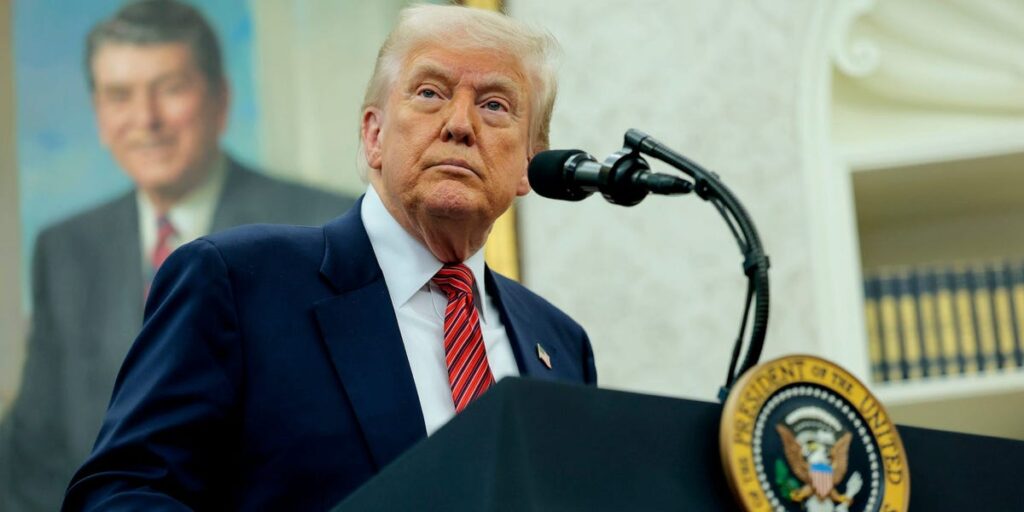President Donald Trump’s plans to dismantle the Department of Education can officially be revived.
On Monday, the Supreme Court said that Trump’s administration can move forward with its plan to terminate over 1,300 of the Department of Education’s employees. Prior to the terminations, the department had 4,133 workers on staff. After the department announced in March that it planned to slash half of its workforce, a federal judge in May blocked those plans from moving forward indefinitely.
The Supreme Court’s Monday ruling temporarily suspends that federal judge’s block while the legal process plays out. The three liberal judges dissented.
“Today, the Supreme Court again confirmed the obvious: the President of the United States, as the head of the Executive Branch, has the ultimate authority to make decisions about staffing levels, administrative organization, and day-to-day operations of federal agencies,” Linda McMahon, Trump’s education secretary, said in a statement.
“While today’s ruling is a significant win for students and families, it is a shame that the highest court in the land had to step in to allow President Trump to advance the reforms Americans elected him to deliver using the authorities granted to him by the U.S. Constitution,” she continued.
Justice Sonia Sotomayor wrote in her dissent that the decision expedites “lawlessness” in the executive branch.
“The majority is either willfully blind to the implications of its ruling or naive, but either way the threat to our Constitution’s separation of powers is grave,” Sotomayor said.
Here’s what this ruling means for the future of the Department of Education.
What dismantling ED would mean for student-loan borrowers and schools
McMahon has repeatedly acknowledged that, despite Trump’s order to eliminate the department, closing a federal agency cannot be done without approval from Congress.
The federal judge who blocked the department’s reduction efforts in May wrote in his ruling that there isn’t any evidence to suggest the administration’s intent to work with Congress.
“Not only is there no evidence that Defendants are pursuing a ‘legislative goal’ or otherwise working with Congress to reach a resolution, but there is also no evidence that the RIF has actually made the Department more efficient,” the ruling said, referring to worker firings, officially called reduction-in-force. “Rather, the record is replete with evidence of the opposite.”
The department primarily facilitates federal funding and research and manages a trillion-dollar student-loan portfolio. Cuts to department staff would make managing those programs more difficult, education analysts previously said, and many programs relying on grants and student aid would likely see more extensive delays and paperwork processing backlogs.
While Trump suggested in March that he wanted to transfer student loans to another federal agency, it’s unclear how quickly the administration is working to make that happen, if at all.
Trump also cut $900 million in research contracts in February, and education experts previously told Business Insider that the cuts are putting future data collection — including the ability to track kids’ progress in science and reading — at risk.
Sheria Smith, president of the American Federation of Government Employees local chapter representing Department of Education workers, said in a statement that the ruling “is playing with the futures of millions of Americans, and after just four months, the consequences are already evident across our education system.”
“It’s deeply disappointing that the Supreme Court is upholding this extreme, anti-democratic agenda, despite this administration’s clear obstruction of civil rights and its misalignment with the Constitution,” Smith said.
In her statement, McMahon said that workforce reductions will now proceed “to promote efficiency and accountability and to ensure resources are directed where they matter most — to students, parents, and teachers.”
Read the full article here
















